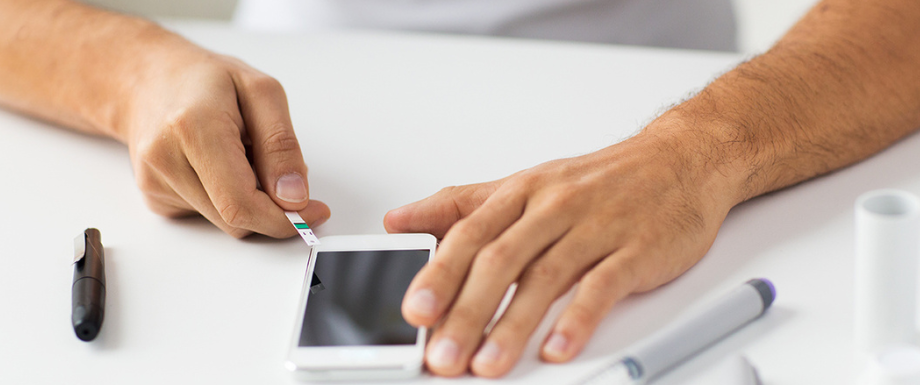A glucometer is a medical device also known as a glucose meter, or blood glucose monitoring device used as part of diabetes treatment at home for testing blood glucose levels at various times of the day.
Components of a glucometer
All glucometer devices essentially have three components.
- Glucometer: Usually smaller than a cell phone, it’s the brain of the system. In this instrument, electric impulses are converted into blood sugar levels. These electric impulses are generated after blood reacts with the enzyme in the test strip.
- Test strip: It’s a thin flexible plastic strip measuring between half an inch and an inch long. They are designed to absorb a small blood droplet for analysis by the meter. Sandwiched between the plastic top and bottom are enzymes that react with blood drops placed on it. These strips can be used only once.
- Lancing Device: Called the glucometer lancet, this has a spring-loaded mechanism and comes in a pen-shaped device. It’s used to prick your skin for blood.
How to use a glucometer
Though different brands of glucometers have different features and mechanisms, here are steps that are common for all glucometers:
- Insert the glucometer test strips in the device properly. If not inserted properly, you might get a wrong reading or no reading at all. Most glucometers prompt you with a signal (sound or light) to tell you that the instrument is ready.
- Clean the site where you are about to prick to draw blood. Clean it with soap and warm water or alcohol-based sanitizer. Dry it thoroughly. This is to avoid any remaining moisture tampering with the values.
- Open the cap of the lancing device and prick the site.
- Place the blood drop on the test strip.
- Most glucometers take not more than 50 seconds after this step to display your blood sugar readings.
Do make it a point to measure your blood sugar levels as prescribed. This is an essential part of diabetes treatment at home that should continue along with medication, diet, and exercise.
How accurate are the readings and what can affect the readings?
Several factors affect the test results of the reading in a glucometer machine. For example, having an insufficient amount of blood in the test sample can result in erroneously low readings, and if the sample site is not cleaned properly then contamination can affect the readings.
Storing of the strips or meter at extreme temperatures can cause misleadingly high or low readings. Apart from that unwashed hands, water, heat, and the age of your test strips is also included in the calibration that can result in wrong reading.
How to control diabetes at home with glucometers
Aim to see a more complete picture of your health progress. Let’s say, when you’re just looking at today’s glucose readings, you’re overlooking how it’s trending overall. Since most devices have an app to store data, you can instead look to see glucose trends over weeks and months.
Seeing your records in colorful comparison graphs and charts makes it easier to understand and figure out the changes. For instance, a graph can quickly show if your blood sugar tends to be high in the mornings either during the weeks or months. Then accordingly, you can share the data with your doctor to see if you need to change your treatment.
Share your blood sugar levels with doctors instantly. Get continuous support to manage diabetes at home. Get a doctor-connected glucometer. Enquire Now
